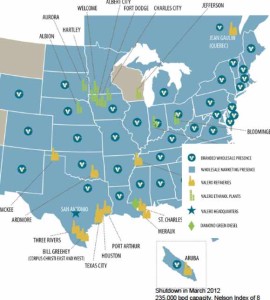The largest new oil storage facility along the Texas Gulf Coast is slated for Houston, TX, according to the Wall Street Journal (WSJ).
The paper's blog identified Houston-based Haddington Ventures LLC, a midstream oil and gas investment firm, as the designer/builder for the Pierce Junction crude oil storage project. Currently, the company is seeking a buyer for a majority stake in the project, which has already been designed and is slated for construction in late 2014.
Since 2008, crude inventories from the tight oil and shale gas revolution, have been piling up in Cushing, Oklahoma, a major oil trading and storage hub. However, TransCanada's Gulf Coast Pipeline, which came online in January of this year, helped significantly reduce inventories in Cushing, but pushed the crude to the U.S. Gulf Coast (USGC) area. As a result, crude inventories in the USGC have recently climbed to record levels according to the Energy Information Administration (EIA), hitting 207.2 million bbl on April 11, 2014. The EIA says the USGC region has about 275 million bbls of current capacity, but projections are for total U.S. oil production to continue growing, and more midstream projects pushing oil to the USGC have been scheduled.
Haddington's Pierce Junction project, which will be in Southwest Houston, will utilize naturally existing salt domes in the area. The way it works is a well is drilled into the formation and large amounts of water are cycled through the well dissolving the salt. The brine is extracted, leaving a large empty space in the formation for storage purposes.
According to WSJ, a Houston investment bank predicts by 2016 projects along the Gulf Coast will accommodate an additional 55-million bbl. The Pierce Junction Project is included in that estimate.
Read more at blog.wsj.com





